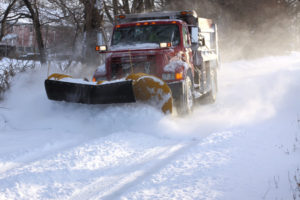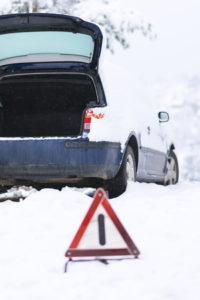Most people associate road trips with summertime, but winter is another popular time of year for people to take to the road. The holidays mean visits to friends or family, or just to get out of town. There’s nothing quite like going to the mountains during the winter snows, after all! Here are some winter road trip safety tips to help you stay safe wherever your travels take you this season.
Winter Road Trip Safety Tips
Brush Up on Your Winter Driving Skills
If you’re accustomed to driving in little to no snow, consider brushing up on your winter driving skills before you start on your road trip.
- Drive slowly: Visibility, slippery conditions, and an increased amount of time to bring your car to a stop mean that driving slowly will help you stay safe while on the road.
- Give Extra Space Between Cars: Depending on conditions, leaving extra space between cars will give you more time to react to changes in traffic. If you do need to stop suddenly, pump the brakes for cars without antilock braking systems. Apply continuous pressure for cars that do have antilock systems.
- Know what to do if your car skids: Let go of the accelerator and brake and turn the wheel in the direction you want the car to face to bring the vehicle under control more quickly.
- Know your vehicle: Especially if you are renting a car, have purchased a new car, or have never driven your car in the snow before, take a few minutes to drive your car around in an empty parking lot to see how it handles in the snow.
Skip the Cruise Control
Cruise control is synonymous with summer road trips, but not so with winter travel. Having your foot on the pedals will help you react more quickly to any unexpected changes in traffic, obstacles in the road, or the condition of the road itself.
Don’t Pass Snow Plows
…even if they’re going at 5 miles per hour! It’s technically legal in many states for you to pass a snow plow, but there are a lot of potential hazards with doing so.
 Snow plow drivers have a limited range of vision and may not see a passing vehicle
Snow plow drivers have a limited range of vision and may not see a passing vehicle- They’re also plowing the road ahead, meaning that the ice and snow on the road in front of them have not yet been cleared away. Road conditions could be significantly more dangerous in front of a snow plow than behind it.
- Snow plows do not maneuver quickly due to their size and weight, so they are unable to react quickly to unexpected traffic accidents or problems.
Snow plows may be slow moving at times, but they’re making the road safer for all drivers in hazardous conditions.
Know What to Do If You Get Stuck in the Snow
Depending on conditions, it’s possible that you could become stuck in snow or ice far from home. Follow these steps if you do get stuck in the snow:
 Call for assistance as soon as you can.
Call for assistance as soon as you can.- Stay with your car and do not try to walk to safety.
- If your car has an antenna, tie a brightly-colored cloth to it to improve visibility in challenging conditions.
- Use the heater in your car for about 10 minutes per hour. Make sure that the tailpipe is clear prior to starting the engine, as toxic gases can quickly accumulate in the cabin of the vehicle.
- Leave one window slightly cracked. If it’s windy, choose the window that is facing downwind to help keep snow out of the vehicle.
If possible, dig your car out and continue travel. Here are some of our top tips to dig your car out of the snow»
Pack an Emergency Kit
 Having an emergency kit in your car is invaluable when you find yourself stuck on the side of the road no matter the weather. When it comes to winter travel, however, this kit can be a lifesaver.
Having an emergency kit in your car is invaluable when you find yourself stuck on the side of the road no matter the weather. When it comes to winter travel, however, this kit can be a lifesaver.
Learn how to pack your own emergency kit here»
Make Sure Your Car is Winter Travel Ready
Book an appointment at T3 Atlanta before you take to the road this winter. We’ll make sure your car is ready for long-distance travel and properly winterized too.










Leave a Reply
You must be logged in to post a comment.